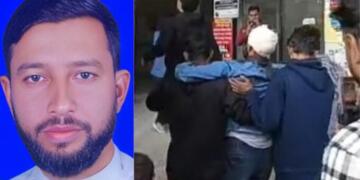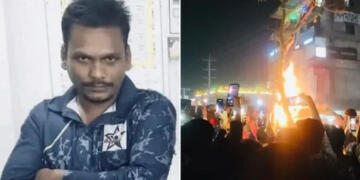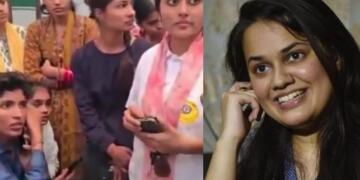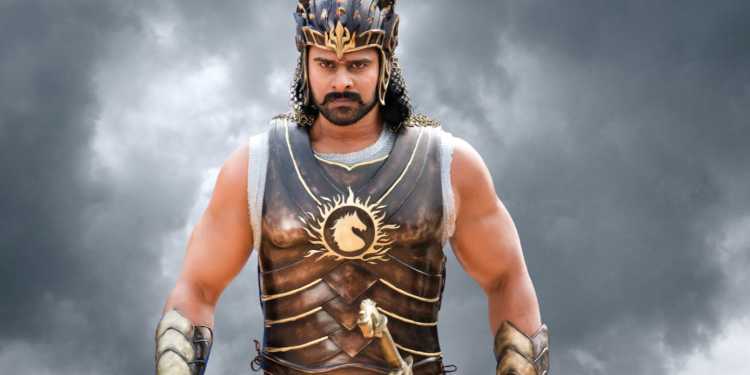The average Indian neither knows nor cares much about his past- and the media he or she consumes is proof enough of it. The texts the youth of India read run smoothly from the mythical ‘invasions’ of the Aryans to the ‘reforms’ of the Shakyamuni and Jina to Ashoka to the Turkish invasion and Mughal barbarism, capped off by the tyrannical British occupation and the following Socialist poverty.
So- who is the Hindu?
Where did they come from? What does they believe? How did they govern themselves? What dreams did they have? What works did they accomplish?
It is easy to see that Popular Media is the mirror of the Society its depicts- and if one were to follow Indian popular culture, it would be evident that the Hindu is, essentially, depicted as nothing more than a pretender to a country seemingly built on absurdities such as the ‘Ganga-Jamuni Tahzeeb’, peddled primarily by the Pakistan-backed Mafia- if Preity Zinta’s statements a decade ago are to be believe- and lorded over by corrupt amoral nepotisms- if Kangana Raunat’s statements this year are. Somewhere in the sludge of item songs, cavorts through Swiss glades, and paeans sung to genocidal Islamist tyrants, it was explicitly made clear to the consumers of mainstream Indian pop cultures- typified by Bollywood- that the very existence of the Hindu in India was nothing more an accident, a residue of history after all the major players had long left.
Ask yourself.
When was the last time Indians learnt of the Gahadavala of Kanyakumbha and Varanasi- the lords of Northern India and the light of civilization until the early 13th Century?
When was the last time Indians learnt of the Chodaganga and Gajapati dynasties of Puri and Cuttack- for six centuries, the defenders of the East from the depredations of Adharma?
When was the last time Indians heard of Vijayanagara, bulwark of the South and the builders of the greatest City on Earth for a full two centuries?
When was the last time Indians read about the music of Pingala, the poetry of Jayadeva, the sciences of Nagarjuna, Bhatta, and so many others? How many Indians can name even ten Arya Kings? Three centuries after the great poet Kavi Bhushan praised Shivaji Maharaja, the creator of the idea of Hindu Pad Padshahi- a homeland for Hindus to live free and proud, we find that Indians have virtually dissociated the idea of Hindu from the idea of Art.
Which is exactly why the Bahubali Saga- for all its faults- was so epoch-making.
It is evident that the primary appeal of Bahubali was simple- the mere grandeur of the vision it presented.
We are presented with a World seemingly straight out of the Puranas, where mighty City-states raise their heads over the rest of the World, where armies glittering, as if from within a dream, clash with each other in titanic struggles, where the will to govern is indistinguishable from the tenets of Dharma. This is a World that has always lain within the heart of the young Hindu, its grandeur only eclipsed by the enforced silence it has laboured under.
Bahubali presents a World that Mahameghavana Kharavela would have known as he humbled the Yavana and restored Civilization after the fall of the Mauryas.
Bahubali presents a World that Skanda Gupta would have known as he led the unvanquished Gupta armies against the endless Hunnic hordes in defence of the greatest Empire of the Classical Age.
Bahubali presents a World that Harshavardhana Pushyabhuti would have known as he laboured to restore Bharatavarsha, a task upon which Aditya, Deva, and Harsha would rebuild the might of Imperial Pataliputra.
Bahubali presents a World that Krishnadeva Raya knew as he flung down the cities of the Bahmani sultanate, a World that “Kapilendradeva Routray knew as he wiped put the armies of Delhi, a Wold that Rajendra Chola knew as he led his triumphant navies across the seas. It is the World Shivaji Maharaja and Bajirao Ballal dreamt of when they fought for a land free of oppression and fear.
Fantastical Bahubali has struck a chord within Indians- because for millions of Bollywood-goers in decades, it is the first movie that does not apologize for its depiction of the legendary history of the Aryas, its faith in the Vedas, the first movie that glories in the customs of the Aryas, the first movie they have seen in ages that holds love, faith, valour, and courage as but the facets of Dharma and Desha.
And it resonates deep; be it from Assam or Gujarat or Delhi or Karnataka, cash registers are afire as people far from the banks of Godavari and Krishna rush to watch this distinctly Telugu movie, an indictment of the old wisdom- much denied by Liberals that at the end of it, this great Continent is one, one people, one land- extending from the Snow-clad Mountains to the great Southern Ocean. Bharata, where dwell the heirs of Emperor Bharata.
Is it mere accident that the ancient city of Mahismati- after which the fictional Mahismati is named- lay neither in the North nor in the South, but at the heart of Central India?
Detractors have complained. Critics have whined. So what?
Let us consider but one of these- where we listen to complains of the overt Hindu nature of the Story and the lack of non-Hindu characters- in a story set at a time when nothing apart from Dharma and the Vedas even existed!
Basic concepts of Siege warfare like the usage of flooding and ladders are dismissed as ‘copies’ of Western movies. I suppose Classical scholars like Chanakya and Kamandaki also wrote their texts after watching Lord of the Rings?
People have whined about ‘racism’ and ‘sexism’. But when Right-wingers protest the idea of Rani Padmavati being depicted as an adulterous whore, not one liberal voice is raised alongside our’s! And where was this talk of Sexism when the Mint declared all Conservative women as mindless fools with ‘crushes’ on Modi?
We hear complains about the worship of ‘fictional goddess’ being replaced by ‘odes to Krishna’. One wonders why the goddess should be fictional- since almost every Arya city has- or had- a patron Deity, usually a Goddess. In my own case as an Oriya, the city of Puri is pledged to Jagannath, the city of Cuttack to Cuttack Chandi, the town of Bhadrak to Bhadrakali, and the Capital of Bhubaneswar to Shiva. It is far more likely for historical Mahismati to once have been worshipped along the banks of the Narmada, than for the city to rise out of nowhere like a sanitized Nehruvian Socialist tribute to Poverty and Starvation. And in which corner of Bharata- or even in distant Vietnam and Afghanistan were the deeds of the eternal Charioteer not sung once?
Rajamouli’s grand vision and stunning execution have crafted a masterpiece.
The acting, the musical score, even the mere concept of presenting such a work of historical fiction is praiseworthy. This is not to say that Bahubali 2 doesn’t have its faults- the dialogues are often wooden, the pacing often too slow, and the character just a tad overwrought.
Nevertheless- these are but trifles, trifles that are easily wiped away by the scale of Bahubali, the width of its World, the majesty of its setting, the brilliance of its execution. At the end of the day, the actions and thoughts of Prabhas, Rana, Anuskha, Ramya Krishnan, and Sathyaraj have held us spellbound, glued to our chairs across the land of Bharata and abroad- enthralled in the image of a World that once was.
What more can be said? Well done, Bahubali.































